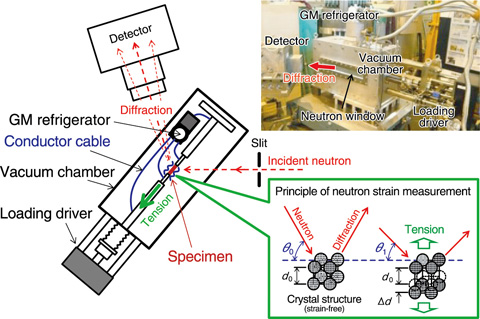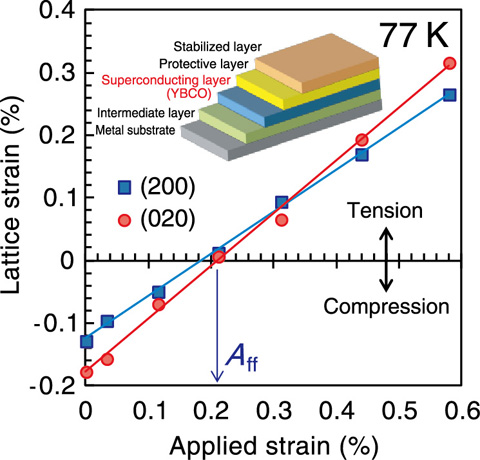
Fig.5-10 Cryogenic load frame for neutron diffraction

Fig.5-11 Change in the lattice strains of a surround Cu stabilized YBCO-coated conductor
The neutron diffraction method can be commonly used to determine the internal strain in materials at centimeter-order depth. Furthermore, it can be used to investigate the microscopic deformation behavior of materials under various environmental conditions, such as different loads and temperatures, which is difficult to accomplish when using mechanical measurement methods with strain gauges.
Fig.5-10 shows the cryogenic load frame for a neutron diffraction system developed in the neutron engineering diffractometer RESA-1, which is located at the JRR-3 research reactor. The deformation behavior of materials at cryogenic temperature can be measured via neutron diffraction using the cryogenic load frame under tensile loading.
Fig.5-11 shows the results of the strain measurement of a surround Cu stabilized YBCO (YBa2Cu3O6+δ)-coated conductor using the cryogenic load frame. The mechanical and critical current properties in a superconducting composite wire are known to be affected by the local strains generated in the superconducting phase. Therefore, it is important to know the local strains at cryogenic temperatures corresponding to its operating temperature. As shown in Fig.5-11, it was clarified that the lattice strains of the 200 and 020 reflections in the YBCO phase at 77 K were approximately zero at an applied strain from 0.19 to 0.21%, which is the force-free strain (Aff). Compressive strains in the YBCO phase induced during the manufacture of a YBCO-coated conductor can increase the material strength up to the corresponding force-free strain. Furthermore, it was clarified that the conventional idea that the maximum critical current agrees with the Aff cannot be applied to a YBCO-coated conductor, because its maximum critical current appeared at 0.035% of the applied strain.
As described above, strain measurement using neutron diffraction with a cryogenic load frame is a very useful tool for developing practical superconducting composite wires, and it is also expected to be widely used in cryogenic materials engineering research.
This research was partially supported by a Grant-in-Aid for Scientific Research (B), “Basic study of mechano-electromagnetic properties and development of high-performance HTc superconducting composites” and “Strain effect on critical current under high magnetic fields for practical superconducting wires -a new development in stress/strain problems,” from the Ministry of Education, Culture, Sports, Science and Technology of Japan (MEXT), Grant Nos.19360289 and 21360312, respectively.